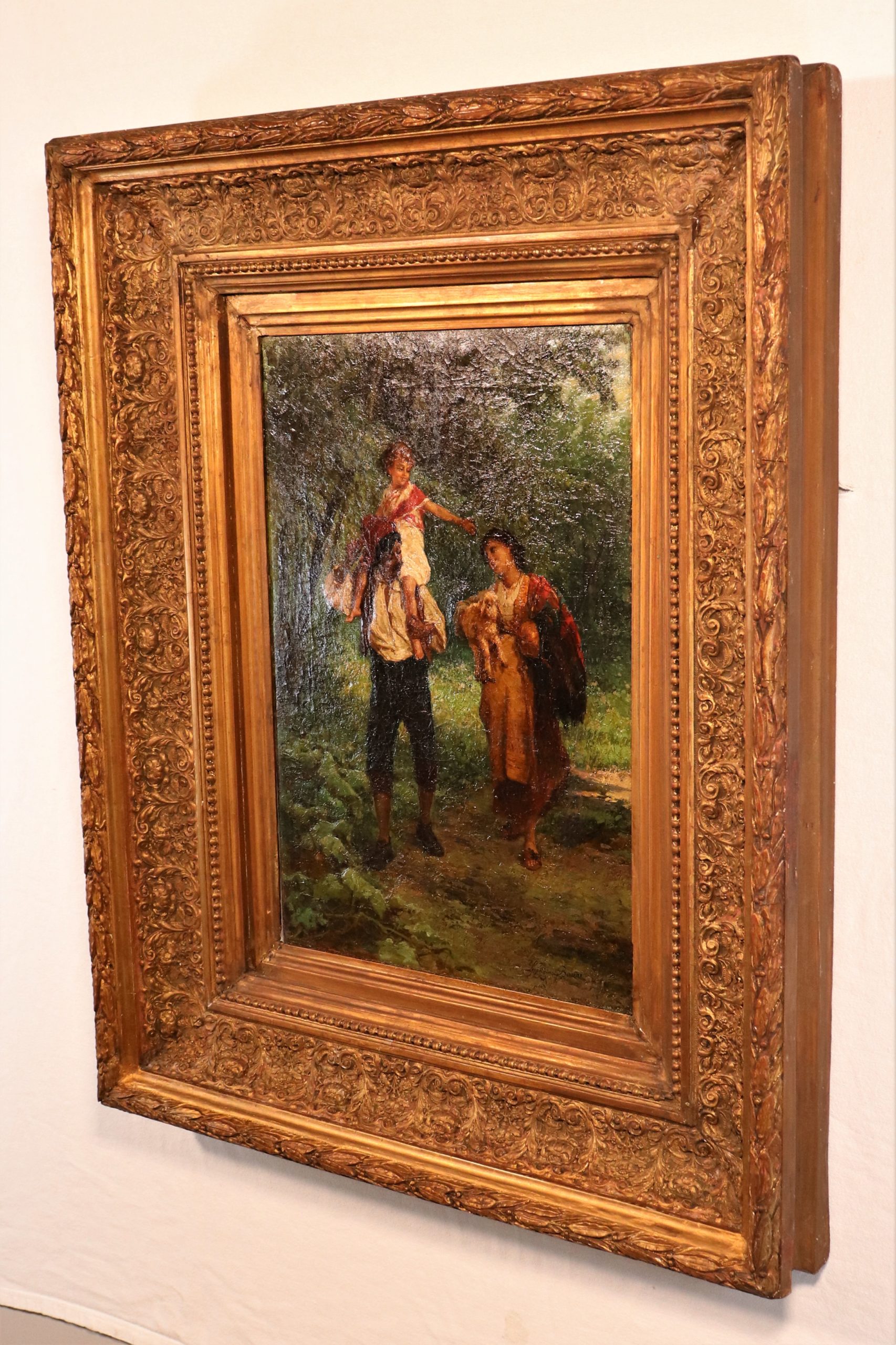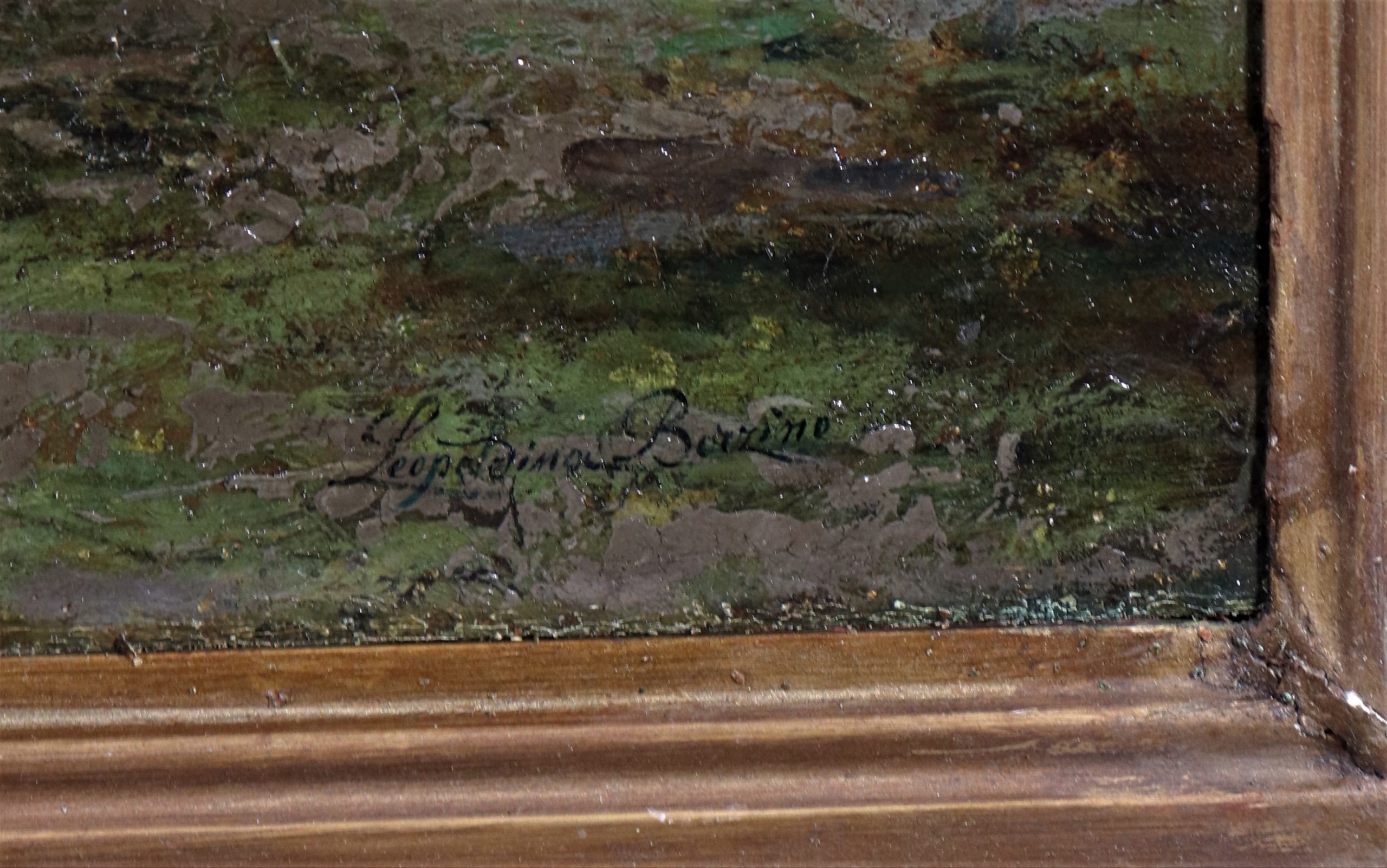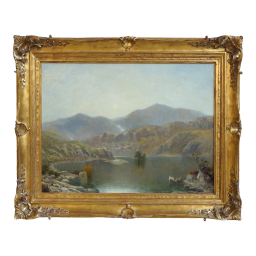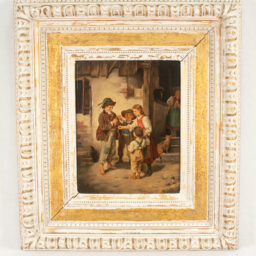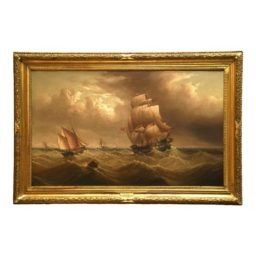Description
Leopoldina Zanetti Borzino (Italian 1826-1902). Born in Venice, Leopoldina was the niece of Daniel Manin, a hero statesman, who would become the President of San Marco, a revolutionary state, which existed for 17 months during the Venetian Revolution of 1848-1849 in which Napoleon ceded Italian lands that included Venice to the Austrians. In 1849, Leopoldina along with her uncle and other military and family members was exiled from Venice. She took refuge in France and then Genoa, where she met and married a fellow painter, Giacomo Ulisse Borzino (1820-1906).
During the Risorgimento movement (1750-1870), many Italian artists, like Leopoldina, depicted historical and patriotic themes. In “The Family”, we see a layered autobiographical rendition of her life. Her family leaving Venice is represented by the Father, Mother, and Child happily walking down a road in the woodlands. However, it also represents the exile from her homeland. Relocating to other lands, not knowing the outcome of the journey, Leopoldina is telling us she never lost faith in her beloved Italy. Exile became a central theme of the foundational legacy of the Risorgimento as the narrative, a moment central to Leopoldina’s life. The love and support expressed in this painting represent the love and support of the Italian people for Italy. The three family members are happy, expressing their faith that Italy would be unified.
Furthermore, “The Family” is portrayed in country garments connoting the oppression of groups. In the mid-19th century, enterprising women, like Leopoldina, began to reach out to other women through print media. Among her students was Claudia (Aurora) Gilardelli Crespi (Italian 1864 -1905), who became known for pointillism, especially the still life of flowers.
In 1855, Leopoldina worked on lithography and published a series of lithographs collected in the Picturesque Album of Genoa. At the same time, she and Giacomo continued involved in the Risorgimento movement (1750-1870) advocating for the liberation and unification of Italy. This social and political movement resulted in the consolidation of different states of the Italian Peninsula into a single state, the Kingdom of Italy. Precipitated by the revolutions of 1848, the movement made it possible to assign Rome as the capital of the Kingdom of Italy in 1871. In 1864, Giacomo and Leopoldina founded the first oleographic factory in Milan.
Raffaelle Armendise (1852-1925), also a celebrated artist, married Leopoldina and Giacomo’s daughter and moved to Milan to work in the family business. Milan was to become Leopoldina’s final resting place.
Her paintings, watercolors, and lithographs can be found in many museums and art galleries including the National Gallery of Art, Gallery of Modern Art (GAM), Villa Saluzzo Serra, Nervi, Genoa, Civic Art Gallery in Imperia (“Ponte di Carignano” exhibited in Genoa in 1858) and at the Risorgimento Museum in Genoa (“The landing in Genoa of Napoleon III in 1859”), The Art and History of Nice (“Nice vue des Hauteurs de Carabacel 1859”) as well as in private collections.
Further Information about this artist can be found in Gazzetta di Genova 1856, Lo Spettatore of Firenze 1857, Dizionario dei Pittori Italiana by Aurelj Bessone 1928, Dizionario Illustrato degli Incisor Italiani Moderni e Contemporanei 1955, Dizionario Enciclopedico Bolaffi Dei Pittori e Degli Incisori Italiani 1972, Benezit 1975, I Pittori Italiani dell’ ottocento Italian by G. Falossi 1993, Pintori e Pinttura dell’ ottocento Italian 1998.
Canvas only: Height= 26 in. Width= 14 in. Depth= 1 in.
With original gilt frame: Height= 32 in. Width= 20 in. Depth= 3.5 in. Weight= 20 lbs.



